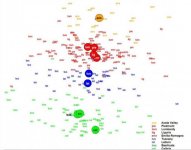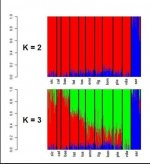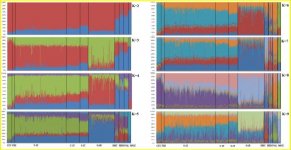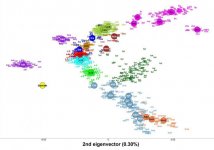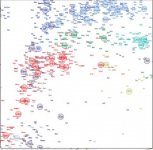Boattini 2013 has 882 Italian Y DNA samples. I piled the results in this spreadsheet.R1b-P312, G2a, E1b-V13, and J2a are the most important aspects of the Italian Y DNA gene pool. R1b-U152 and R1b-DF27(?) take up almost 50% of North Italy, 1/3 of Central Italy, and less than 20% of South Italy. That's the most significant regional trend in Italy.
Meh. You are lumping Tuscany, which had a big founder effect of R1b in NW area, with areas like Latium, Abruzzo and Marche who have loads of J2a and J1. On the other hand Campania, Sicily, parts of Apulia and Molise are very very very different in their Y-DNA from Basilicata, Calabria and Salento.
Tofanelli et al 2015, which summed several sources, found out that Sicily as whole is about 35% of R1b, more than Latium and on par with Umbria and Abruzzo.
There is also a difference in R1b suclades between NW and NE Italy. Liguria has a lot of P-312*, while in Lombardy and Emilia is almost all U152. NE has also much more L2, which is very common above of Alps.




